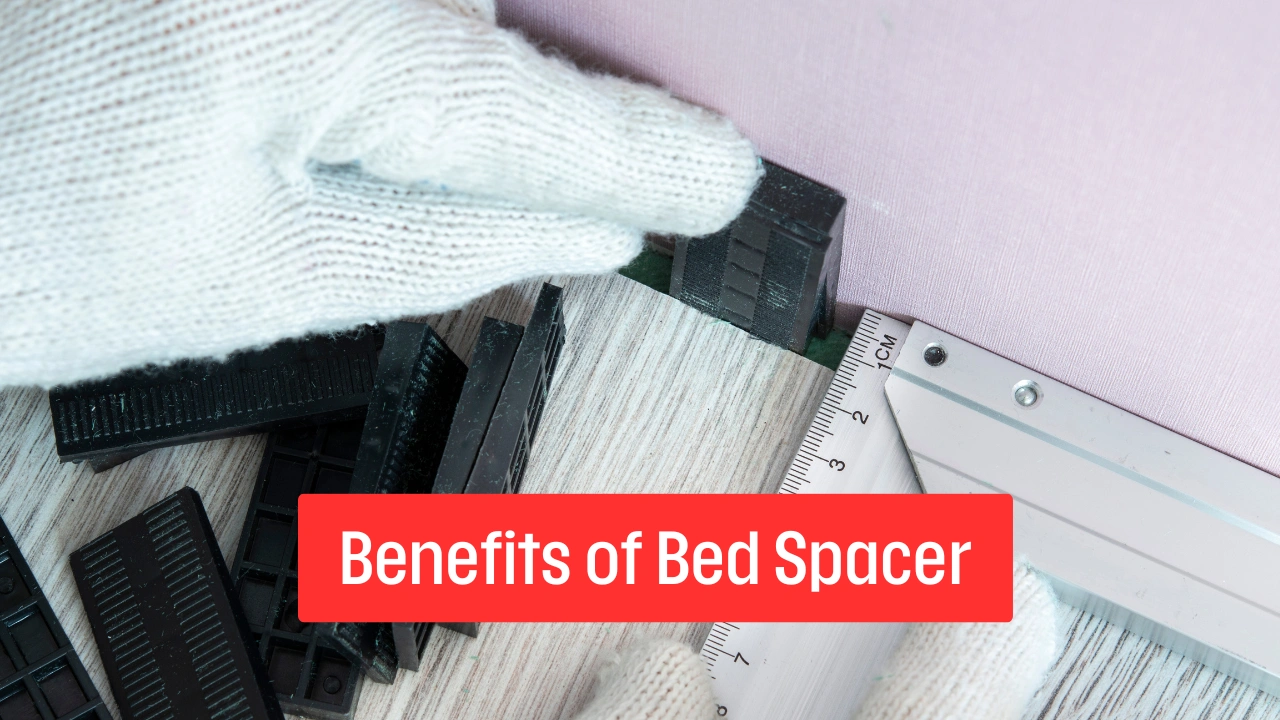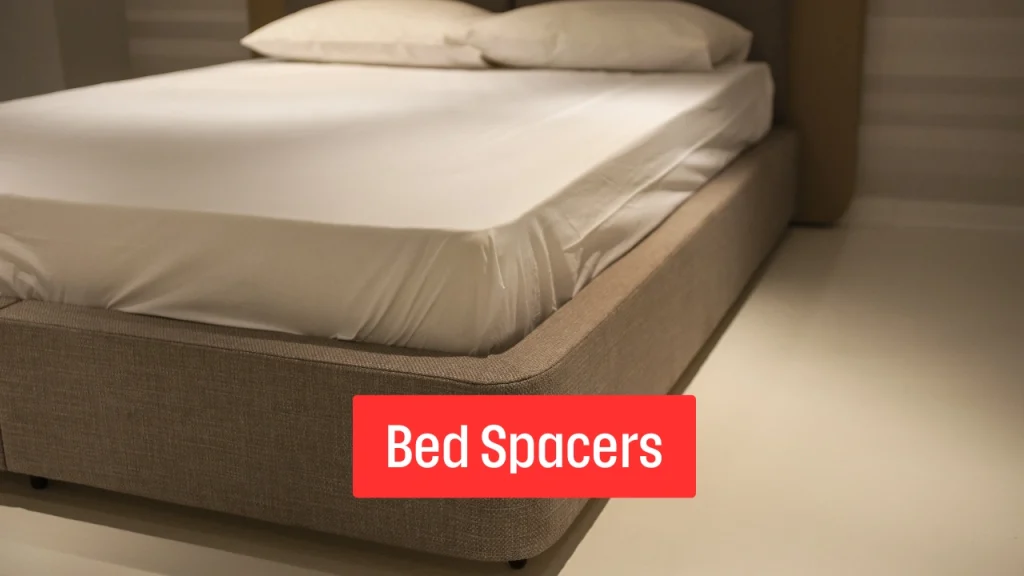A bed spacer is a simple yet helpful accessory that many people use to improve their sleep setup or room layout. Whether you’re trying to create extra storage under your bed or keep it from damaging the wall, this product does it all. Many homeowners and students living in dorm rooms rely on these tools for both comfort and convenience.
In this blog, we will talk about what a bed spacer is, why it’s useful, and how it can help you make the most of your furniture. We’ll also explore different types, materials, and common uses for both homes and dormitories.
Read More About fok959s-m model and bed models here fok959s-m model
What Is a Bed Spacer?
A bed spacer is a small object placed between your bed and the wall or under your bed’s legs. It helps to create a gap or lift between the bed frame and the floor or wall. Some bed spacers are designed to raise the height of your bed, making it easier to get in and out. Others help to keep your pillows from slipping through the cracks or protect your walls from scuffs.
These spacers are often made from strong plastic, rubber, or metal. Some are adjustable, letting you choose how much space you want. They are available in different shapes, such as cubes, cones, or blocks, depending on your needs.
Why Use a Bed Spacer in Your Room?
A bed spacer serves many purposes, all of which make life more comfortable and organized. One of the most common reasons to use a bed spacer is to create extra storage space under your bed. This is helpful for people who live in small apartments or shared spaces.
Another reason is protecting your walls. If your bed is pushed too close to the wall, the constant rubbing may damage the paint. A spacer will keep the bed in place while stopping that contact. It can also be used to prevent air blockages near air conditioners mounted on the wall behind the bed.
Benefits of Using a Bed Spacer
There are several reasons why adding a bed spacer to your furniture setup is a smart idea. First, it helps you make better use of your room by lifting the bed and giving you more room underneath. You can use that space to store shoes, boxes, clothes, or books.

Second, it improves the way your bed looks and works. When your bed stays in one place and your pillows don’t fall behind it, your sleep experience is better. Third, it can make cleaning easier. When the bed is lifted, it’s easier to vacuum or sweep under it.
Also Read: Double Bed The Perfect Fit for Your Sleep Style
Types of Bed Spacers Available Today
There are many types of bed spacers, each made for a specific purpose. Some are adjustable, while others offer a fixed height or space. The most common types include riser spacers and wall spacers.
Let’s look at the comparison between the two in the table below:
| Type of Bed Spacer | Main Function | Typical Use | Height Range |
|---|---|---|---|
| Riser Spacer | Elevates the bed for storage | Dorms, small bedrooms | 3 to 8 inches |
| Wall Spacer | Prevents bed from touching the wall | Bedrooms, AC-protected walls | 1 to 3 inches |
| Combo Spacer | Offers both elevation and gap control | Flexible home setups | Adjustable (multi-level) |
As you can see, riser spacers are best when you want more storage. Wall spacers are good when you’re trying to avoid contact between the bed and your wall. Combo versions give you the benefit of both.
Also Read: Bed Frame Ideas to Upgrade Your Bedroom Look Instantly
Materials Used in Making Bed Spacers
The material used in making a bed spacer affects its strength, design, and durability. Plastic is most common because it is lightweight and low-cost. Heavy-duty versions may use rubber or steel for extra support.
For example, if you have a heavy wooden bed or metal frame, you will need a strong material like metal or hard rubber to ensure the spacer won’t break under pressure.
Here’s a table comparing common materials:
| Material | Durability | Weight Capacity | Best For |
|---|---|---|---|
| Plastic | Medium | Up to 1,200 lbs | Light beds, college dorms |
| Rubber | High | Up to 3,000 lbs | Preventing slips, wall gaps |
| Metal | Very High | Up to 5,000 lbs | Heavy beds, king-sized beds |
Rubber spacers also provide good grip on floors, reducing the chance of bed movement. Metal ones are best for long-term use and high strength.
How to Install a Bed Spacer
Installing a bed spacer is simple and takes only a few minutes. First, lift the corners of your bed slightly, either by yourself or with help. Slide the spacer under each leg or between the bed and the wall.
Make sure the spacer is centered and flat on the ground. If it’s adjustable, choose the right height before placing the bed back on top. Check that the bed is balanced and doesn’t wobble.
If you’re using a wall spacer, place it securely so that the bed’s headboard rests against it lightly. Once placed properly, your pillows will stay in place and your walls will stay clean.
Who Should Use a Bed Spacer?
Anyone who wants to improve their bedroom setup can benefit from using a bed spacer. College students often use them in dorms to maximize their small living areas. Families also use them in kids’ rooms to organize toys and clothes under the bed.
Older adults may use riser-type spacers to raise the bed for easier access. Beds that are too low can be hard to get in and out of. Raising the bed helps people with knee or back problems.
Additionally, homeowners who care about wall protection use wall spacers to prevent headboards from scraping off paint or hitting switches.
Best Places to Buy Bed Spacers
You can find bed spacer products online and in stores. Websites like Amazon, Walmart, and Home Depot offer many types, including heavy-duty risers and adjustable kits.
Always check the weight capacity before buying. Make sure the product matches your bed size and type. For example, a twin bed may not need as strong a riser as a king-size wooden frame.
Look for customer reviews to know if a product is durable and safe. Products with a higher number of ratings and verified purchases are often more reliable.
Also Read: Single Bed Styles That Combine Comfort and Storage
Bed Spacer Safety and Maintenance Tips
To keep your bed spacer working well, you should check it from time to time. Make sure the risers are not cracked or slipping. If they are adjustable, lock them into place fully.
Avoid dragging the bed while the spacers are attached, as this could damage both the bed and the spacer. Always lift the bed if you need to move it.
Clean the area around and under the spacers regularly. Dust or dirt build-up can affect grip and cause the bed to slide. When used properly, a bed spacer can last for years without needing replacement.
Conclusion
A bed spacer is a smart solution to many bedroom challenges. It helps you save space, protect your furniture, and improve access. Whether you need extra storage or simply want your bed to look neater, adding a spacer makes a big difference.
By choosing the right type and material, you can enjoy a stable and organized sleeping area. From dorm rooms to master bedrooms, this small product provides big value.
If you’re thinking about home improvements, don’t overlook the power of a simple bed spacer to transform your space.




